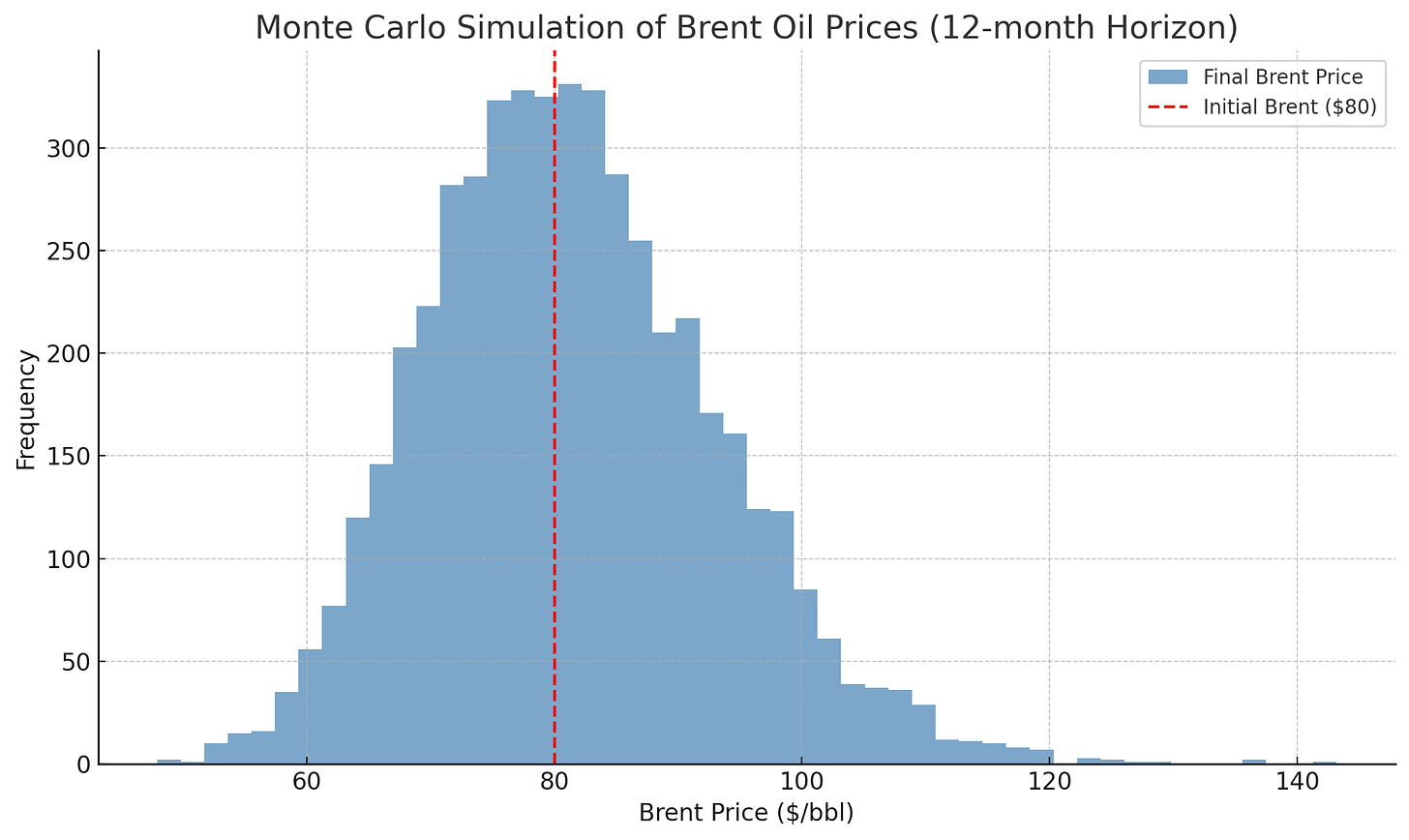2025 Asian Energy Sector Update: Brent Oil Scenarios, Dividend Leaders, and Asia’s Role in the Repricing
A comprehensive investor update on oil prices, equity valuations, and macro drivers as the energy cycle shifts.
Good Morning,
Well, here we are in mid-2025, and it feels like the right moment to revisit the oil and gas themes we've been tracking since our pieces earlier this year. The market has thrown us some curveballs since January—some validating our earlier thinking, others forcing us to recalibrate in ways that have been genuinely illuminating.What strikes me most is how we're witnessing something of a transition period, not just in market cycles but in how we think about energy markets altogether. The Asian context that's been central to our analysis continues to evolve in fascinating ways, and frankly, some of the recent developments have been more dramatic than we anticipated.
Since our initial exploration of refining dynamics in Asia, the investment strategy implications for oil equities, and China's pivotal role in 2025 demand patterns, several key themes have crystallised. The divergence in market forecasts has become more pronounced, cycle analysis suggests we may be approaching a critical inflection point, and Asian energy markets continue to demonstrate both resilience and vulnerability in equal measure.
But before we go there, this report is partially paywalled, and if you are interested in its findings, do join up, we’d love to have you!
Serious about investing in Asia? Then your process needs more Panda.
We get it, for some readers, a Substack alone isn’t enough. If you’re looking for sharper insights, personalised feedback, or just someone to help you cut through the noise in China and Asia, we also offer bespoke research calls and strategy sessions.
Right now, we’re working with clients on China’s consumer landscape, the 2Q25 macro outlook, and yes robotics.
See what we offer here, and connect with us today or message us directly.
Nothing in this Substack is Investment Advice. This information is provided for informational purposes only and does not constitute financial, investment, or other advice. Any examples used are for illustrative purposes only and do not reflect actual recommendations. Please consult a licensed financial advisor or conduct your own research before making any investment decisions. The authors, publishers, and affiliates of this content do not guarantee the accuracy, completeness, or suitability of the information and are not responsible for any losses, damages, or actions taken based on this information. Past performance is not indicative of future results.
One of the most striking developments this year has been watching major forecasting institutions arrive at completely different conclusions about where oil markets are headed. We're talking about a 1,140 kb/d divergence between the IEA's projected surplus of 500-900 kb/d and OIES's deficit of 240 kb/d. That's not a rounding error—that's a fundamental disagreement about market reality.
The divergence boils down to three key assumption differences that are worth understanding:
OPEC+ Spare Capacity: The IEA assumes the cartel keeps 4.6 mb/d offline throughout 2025, maintaining current discipline. OIES thinks fiscal pressures will force partial deployment, reducing effective spare capacity to 3.2-3.8 mb/d. Having watched OPEC+ dynamics for years, we lean toward the OIES view—fiscal discipline has limits.
NGL Growth: Here's where it gets technical. IEA projects 1.2 mb/d of natural gas liquids growth from US associated gas production, while OIES sees infrastructure constraints limiting this to 0.8 mb/d. The difference matters because NGLs compete with crude in many applications.
Demand Timing: The IEA is incorporating recent weakness in China and Europe into full- year projections, while OIES emphasises leading indicators suggesting H2 recovery. This timing question has become crucial given recent geopolitical developments.
Speaking of which, the Israel-Iran situation has added a whole new dimension to market dynamics. The conflict escalated significantly in mid-June, triggering the largest single-day oil price surge we've seen in three years. Israel's strikes on Iranian energy facilities have everyone focused on the Strait of Hormuz, which handles 34% of seaborne oil trade.
The initial 4-7% price spike moderated when signs emerged that Iran might seek a ceasefire, but the risk premium has fundamentally repriced. If Iran were eliminated from global markets, we're looking at $7.50/bbl upside. A Strait closure could add $8-31/bbl.
While analysts think full closure is unlikely, given that Iran depends on the waterway for its own imports the tail risk is now much more visible.
Monte Carlo Time
The uncertainty around these competing narratives makes probabilistic analysis particularly valuable. Recent Monte Carlo simulations we've been running provide a framework for thinking about potential outcomes over the next 12 months.
Starting from $80/bbl Brent, 5,000 simulation runs suggest a mean expected price of $81.4/bbl—essentially sideways movement. But the distribution tells a more nuanced story. The 25th percentile sits at $73/bbl, while the 75th percentile reaches $88.8/bbl. More dramatically, tail scenarios range from $47.9/bbl to $143.2/bbl.
What makes this particularly relevant for equity investors is how oil price volatility translates into free cash flow yields. The simulation shows FCF yields ranging from 0.4% in the worst-case scenario to nearly 29% in the best case, with a median around 10.2%.
Three-quarters of scenarios generate yields above 7.9%—pretty compelling for income- focused investors.The asymmetric nature of these distributions is worth noting. While downside scenarios exist, the upside skew reflects the structural supply constraints and geopolitical risks we've been discussing. Current equity valuations seem to embed assumptions closer to the 25th percentile outcomes, creating potentially attractive risk-adjusted opportunities.
Cycle Transition: The Shale Plateau Meets New Supply Reality
Keep reading with a 7-day free trial
Subscribe to Panda Perspectives to keep reading this post and get 7 days of free access to the full post archives.







